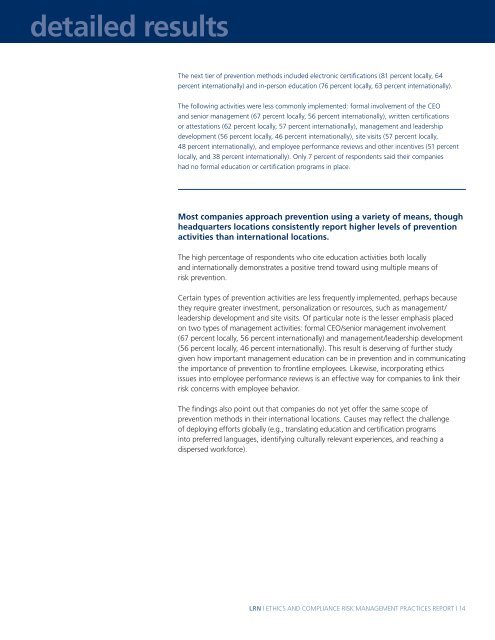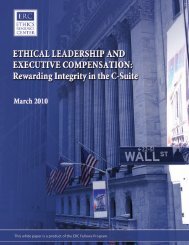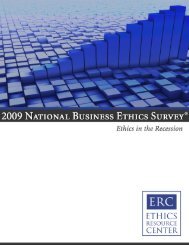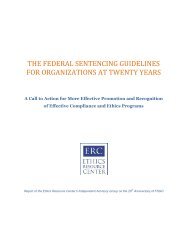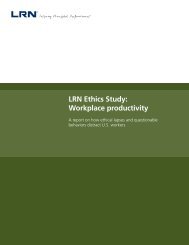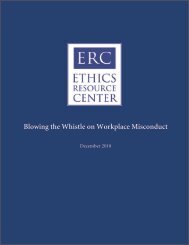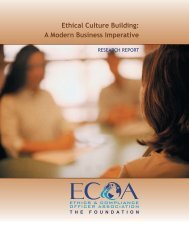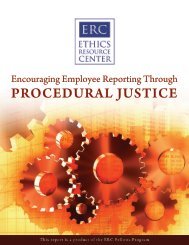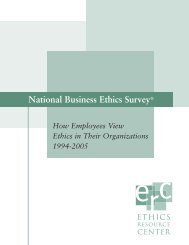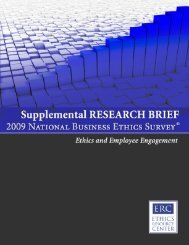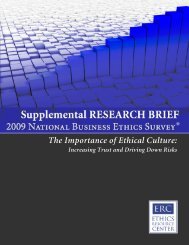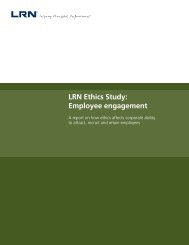LRN - Risk management Survey - Ethics Resource Center
LRN - Risk management Survey - Ethics Resource Center
LRN - Risk management Survey - Ethics Resource Center
- No tags were found...
Create successful ePaper yourself
Turn your PDF publications into a flip-book with our unique Google optimized e-Paper software.
detailed resultsThe next tier of prevention methods included electronic certifications (81 percent locally, 64percent internationally) and in-person education (76 percent locally, 63 percent internationally).The following activities were less commonly implemented: formal involvement of the CEOand senior <strong>management</strong> (67 percent locally, 56 percent internationally), written certificationsor attestations (62 percent locally, 57 percent internationally), <strong>management</strong> and leadershipdevelopment (56 percent locally, 46 percent internationally), site visits (57 percent locally,48 percent internationally), and employee performance reviews and other incentives (51 percentlocally, and 38 percent internationally). Only 7 percent of respondents said their companieshad no formal education or certification programs in place.Most companies approach prevention using a variety of means, thoughheadquarters locations consistently report higher levels of preventionactivities than international locations.The high percentage of respondents who cite education activities both locallyand internationally demonstrates a positive trend toward using multiple means ofrisk prevention.Certain types of prevention activities are less frequently implemented, perhaps becausethey require greater investment, personalization or resources, such as <strong>management</strong>/leadership development and site visits. Of particular note is the lesser emphasis placedon two types of <strong>management</strong> activities: formal CEO/senior <strong>management</strong> involvement(67 percent locally, 56 percent internationally) and <strong>management</strong>/leadership development(56 percent locally, 46 percent internationally). This result is deserving of further studygiven how important <strong>management</strong> education can be in prevention and in communicatingthe importance of prevention to frontline employees. Likewise, incorporating ethicsissues into employee performance reviews is an effective way for companies to link theirrisk concerns with employee behavior.The findings also point out that companies do not yet offer the same scope ofprevention methods in their international locations. Causes may reflect the challengeof deploying efforts globally (e.g., translating education and certification programsinto preferred languages, identifying culturally relevant experiences, and reaching adispersed workforce).<strong>LRN</strong> | ETHICS AND COMPLIANCE RISK MANAGEMENT PRACTICES REPORT | 14


